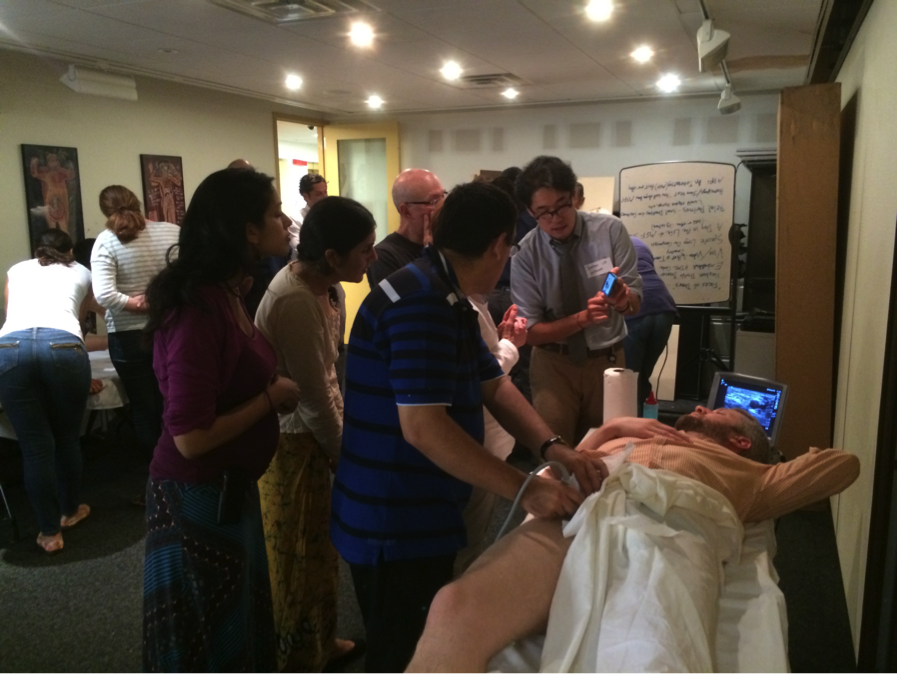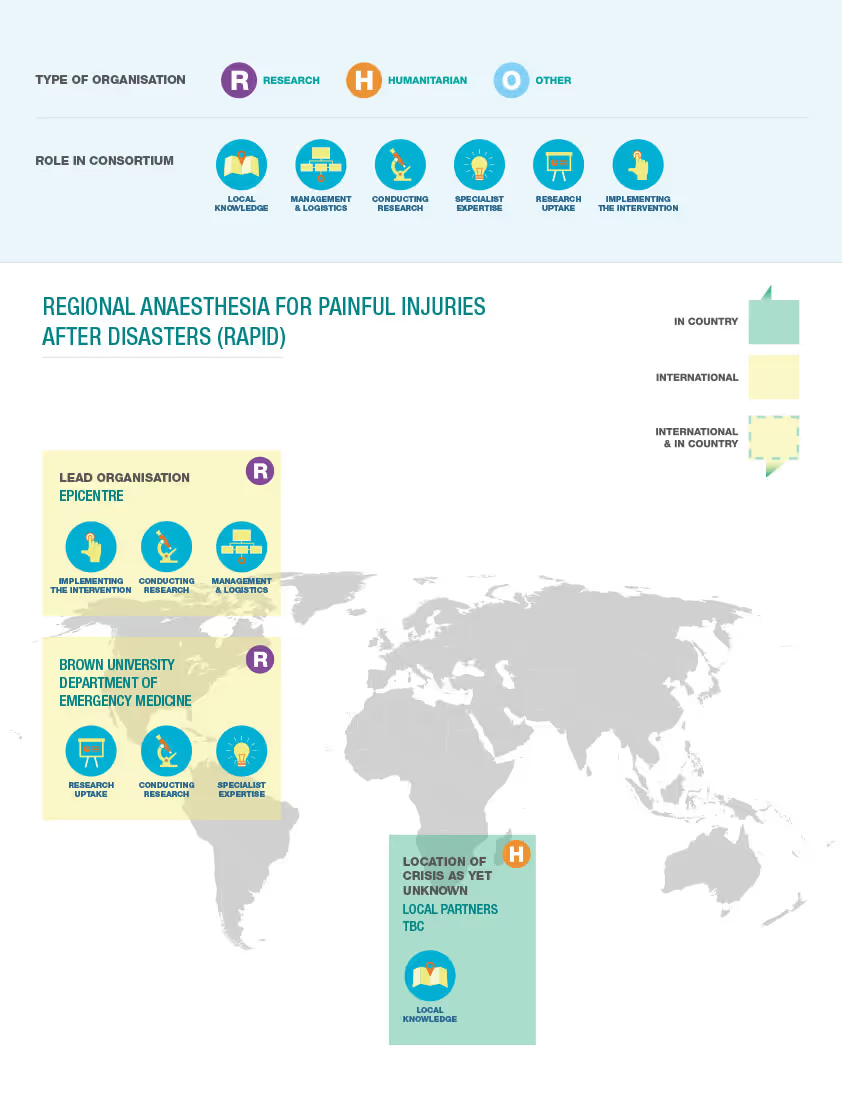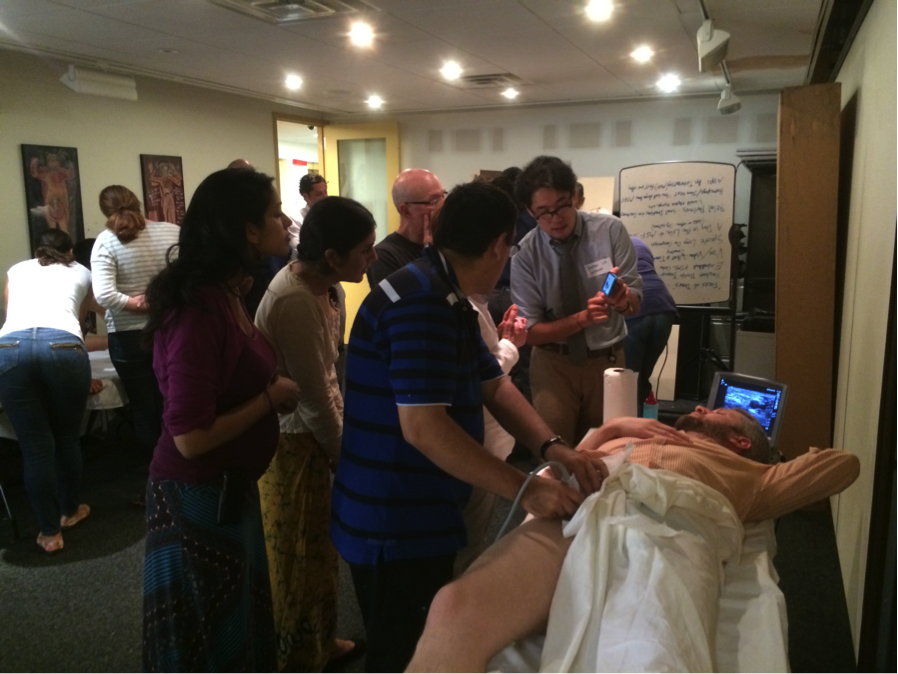RAPID (Regional Anaesthesia for Painful Injuries after Disasters)

Project overview
To transform the way serious injuries are managed after earthquakes and other disasters by introducing a novel, cost-effective, and locally appropriate method for pain control.
Project solution
This project offers [specific solution or intervention] to tackle [challenge]. By implementing [strategies, tools, or innovations], the project aims to achieve [desired outcomes]. The approach is designed to [specific actions or methods] to bring about meaningful change in [community, region, or issue area].
Expected outcomes
This project aims to achieve [specific outcomes], such as [measurable results, improvements, or changes]. The expected impact includes [benefits to the target community, advancements in research or innovation, or long-term effects]. By the end of the project, we anticipate [specific changes or milestones] that will contribute to [broader goals or objectives].
Principal Investigator: Carrie Teicher, Epicentre
Purpose
The goal of the RAPID study was to fundamentally transform the way serious injuries are managed after earthquakes and other disasters by introducing a novel, cost-effective, and locally appropriate method for pain control.
This study aimed to demonstrate that local medical providers could be trained to perform regional anesthesia safely and effectively. It sought to validify an intensive, two-day training in regional anesthesia for a group of international physicians, and a subsequent identical training provided for a small group of local physicians in the immediate aftermath of an earthquake.
The study also planned to enroll patients in the aftermath of a major earthquake to determine whether regional anesthesia, either with or without ultrasound-guidance, could reduce suffering from lower limb injuries. These are the most common earthquake-related injury. The hope was to demonstrate that regional anesthesia could revolutionize trauma care in disaster settings by significantly improving pain management over the current standard of care. This could reduce the pain and suffering for hundreds of thousands of individuals injured in major earthquakes each year.
Programmes and Outcomes Achieved
This ‘rapid response’ project was reliant on there being a suitable earthquake which would enable the research study to take place. As no earthquake took place in the timeline, the full research study was not triggered. However Standard Operating Procedures have been designed which can be used in future research, and protocols have been published. Lessons were learned about the development of a clinical trial for management of injuries in an earthquake context, which will inform future research studies, including how to deliver effective training on regional anaesthesia to medical responders.
Key outputs:
- Study protocols published in peer-reviewed journal
- Study findings on impact of regional anaesthesia training published in peer-reviewed journal
Next steps:
Standard Operating Procedures have been developed which are ready to be used for research if/when a suitable acute trauma/earthquake scenario occurs in future (funding dependent)

Project delivery & updates
Stay up to date with the latest developments from this project. Here, you will find details on what has been delivered, resources created, and regular updates as the project progresses. Access key documents, reports, and other materials to see how the project is making an impact.
Resources
Journal article
LEARN MOREJournal article
LEARN MORE